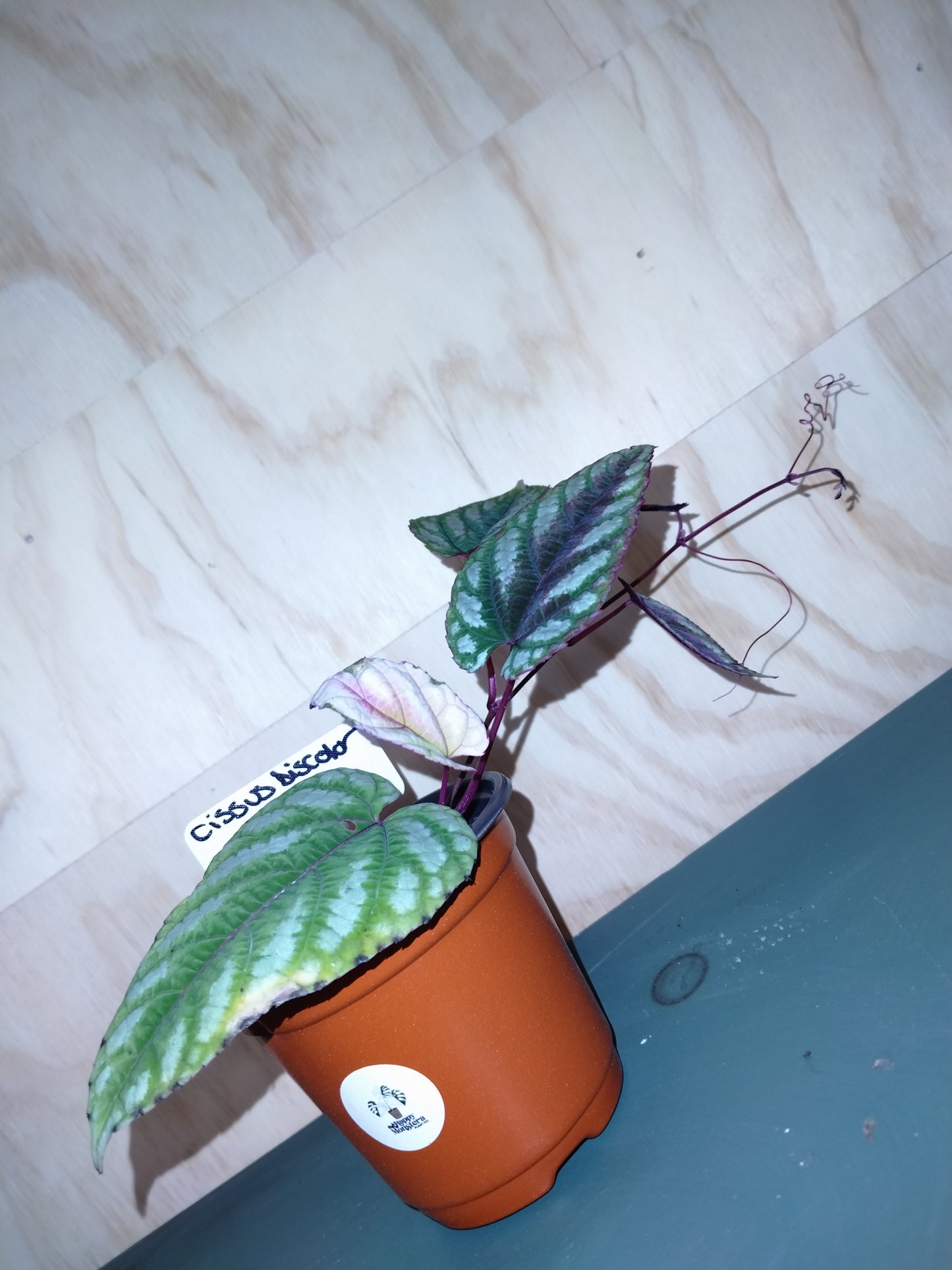The Happy Monstera Plant Co
Begonia Rex vine
Begonia Rex vine
Couldn't load pickup availability
🌿 Cissus discolor Overview
Scientific Name: Cissus discolor
Common Names: Rex Begonia Vine, Tapestry Vine, Painted Vine
Family: Vitaceae (the grape family)
Origin: Native to Java, Indonesia
✨ Description
Cissus discolor is a tropical climbing vine known for its velvety, heart-shaped leaves that shimmer with iridescent silver patterns over a deep green background and rich burgundy-purple undersides. The plant’s beauty is reminiscent of a begonia—hence the nickname Rex Begonia Vine—but it’s actually related to grapes.
It grows gracefully on trellises, poles, or hanging baskets, displaying trailing stems that can reach up to 6–10 ft (1.8–3 m) indoors with proper support.
🌞 Light Requirements
-
Thrives in bright, indirect light.
-
Too little light causes dull colors and sparse growth.
-
Avoid harsh direct sun, which can burn the delicate leaves.
💧 Watering
-
Keep soil consistently moist, but never soggy.
-
Allow the top 1 inch (2.5 cm) to dry between waterings.
-
Use lukewarm, filtered water when possible.
-
Reduce watering in winter when growth slows.
🌡️ Temperature & Humidity
-
Prefers 65–80°F (18–27°C).
-
Avoid cold drafts or sudden temperature changes.
-
High humidity (60–80%) is essential — mist regularly or use a humidifier to prevent leaf crisping.
🌱 Soil
-
Use a loose, well-draining mix rich in organic matter.
-
Ideal mix: peat moss or coco coir + perlite + orchid bark.
-
Ensure excellent drainage to prevent root rot.
🌿 Growth & Maintenance
-
Moderate to fast grower under ideal tropical conditions.
-
Can be grown on a trellis, moss pole, or allowed to trail.
-
Prune regularly to maintain shape and encourage fuller growth.
-
Rotate periodically for even light exposure.
🌸 Propagation
-
Propagate via stem cuttings (4–6 inches long).
-
Root in water or moist soil with bottom heat and humidity.
-
Best done in spring or early summer.
⚠️ Common Issues
-
Leaf drop or crisping: Often due to low humidity or temperature stress.
-
Pale leaves: Too little light.
-
Pests: Watch for spider mites, aphids, and mealybugs, especially in dry air.
🪴 Toxicity
-
Considered non-toxic to pets and humans, though ingestion is not recommended.
🌈 Fun Fact
Despite its begonia-like appearance, Cissus discolor is a vine in the grape family — its stems may even develop small tendrils like grapevines!
Share

